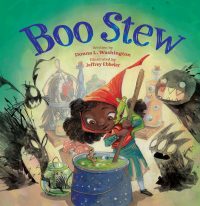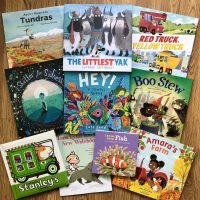Explore the charming forest world of Best Friend in the Whole World with debut author-illustrator Sandra Salsbury! We asked Sandra about the inspiration and writing process for her sweet and moving picture book about compassion and friendship, and she’s sharing all about it here!

Q: We’re so excited to introduce you and your book to the world! Tell us a little about yourself and how you became a writer and illustrator.
A: Hello! I am an author-illustrator from the San Francisco Bay Area. Growing up, I loved to draw, and I became an illustrator because I never wanted to stop. If it was something I was going to do every day anyway, I decided it should probably be my job. When a person illustrates, they tell a story with pictures, so it just made sense that I would start telling my stories with words as well.
Q: What inspired Best Friend in the Whole World?
A: Best Friend in the Whole World is actually inspired by the real-life story about the time I found a stick, decided it was definitely the best stick in the whole world (It had two types of moss on it!), and then promptly lost it.
Q: How did you decide that Roland would be a rabbit and Milton a pine cone?
A: As a child, my favorite picture books had rabbit characters—The Golden Egg and The Runaway Bunny by Margaret Wise Brown and The Tale of Peter Rabbit by Beatrix Potter. I have always felt they are the perfect picture book characters. Plus, their ears are fun to draw. I chose a pine cone for Milton/Popkin because I grew up in the forest surrounded by pine cones and used them in many of my own craft projects growing up. I don’t know if I ever made my own pine cone friend, but I should have.
Q: What do you think are important qualities in a best friend?
A: The most important quality in a best friend is that they bring joy into your life. People have all kinds of friends for all kinds of reasons, and each friend is special in their own unique way. Two people might become friends for many different reasons, but as long as they make each other happy, that is the only thing that matters.
Q: Have you ever had an imaginary friend?
A: I grew up surrounded by imaginary friends, but my very best imaginary friends were the ones I shared with real friends.
Q: Have you ever lost anything you loved?
A: Aside from my beloved stick that inspired the story in the first place, I also had a puffin finger puppet as a child that I took with me everywhere until, of course, I lost it. I still think about that puppet, so perhaps you can expect a puffin book some time in the future.
Q: You dedicated this story to Jacob, your own best friend in the whole world. What are some things you and your best friend like to do together?
A: Just like Roland and Milton/Popkin, one of my favorite things to do with Jacob is take walks. Sometimes we take walks on the trails in the nearby forests, and sometimes we just walk through our neighborhood and pet all the dogs and cats that live near us.
Q: What is your creative process like? Does it change when you’re doing both the text and illustrations?
A: It’s hard to know where an idea will come from— an image or a sentence or a feeling—but I almost always start by drawing the character. It’s hard to imagine a story without knowing what the character looks like! I spend a lot of time thinking about my stories before I write a single word. I might spend weeks, months, or years thinking about a story and getting it right in my head, and then one day I’ll just sit down and write the whole thing out. After that, I’ll do sketches of each page, and then I will have to go back and change the words, and then I’ll have to change the drawings until everything is balanced and working together.
Q: What do you hope readers take away from reading Best Friend in the Whole World?
A: I hope Best Friend in the Whole World will show readers all the wonderful ways in which we can be a good friend. Roland takes care of Milton/Popkin. Milton/Popkin provides company when others are lonely. Lucy welcomes Roland into her friendship with Milton/Popkin. And I hope the book reminds readers that even if we do something that doesn’t feel like something a friend should do, there is always a chance to make up for it, and you can end up even better friends than before.














Leave A Comment
You must be logged in to post a comment.